Event Report “Pathways to Future Regional Development” workshop RSA Research Network
Smart Policies for Regional Innovation, Sustainability and Transitions (SPRINT)

May 20th, 2025, Austrian Institute of Economic Research, Vienna, Austria
By Martina Pardy, Dima Yankova and Benjamin Cornejo-Costas
Report
The one-day workshop, entitled “Pathways to Future Regional Development” focused on the themes of sustainability, inequality and innovation. It was organised jointly by the research network on Smart Policies for Regional Innovation, Sustainability and Transitions (SPRINT), the Regional Studies Association (RSA) and the Austrian Institute of Economic Research (WIFO). The event aimed to foster in-depth discussions and collaboration among 25 to 30 researchers, policymakers, and practitioners, working on closely related topics and questions.
The workshop was one of several in-person events organised by the SPRINT network, which is coordinated jointly by Martina Pardy, Eduardo Hernández-Rodríguez, Benjamín Cornejo-Costas and Dima Yankova.
There were a total of 25 attendees: 2 keynote speakers, 16 presenters, the 3 organisers, and 4 delegates. The audience was also very diverse, with more than 10 countries represented in the room, including Czech Republic, Norway, Italy, Turkey, UK, the Netherlands, Luxembourg, and others. Presenters came from a variety of professional backgrounds: while many were academic researchers, others represented policy-making and governance organisations (i.e. the public Chamber of Commerce of Bolzano/Boze, UNDP), and even private companies (Trendyol).
On the one hand, the workshop featured two distinguished keynote speakers, who were chosen for the strong relevance of their research to the workshop’s overall theme: Prof. Riccardo Crescenzi from the London School of Economics and Political Science, and Ljubica Nedelkoska, who is a Senior Scientist at Complexity Science Hub Vienna and the Harvard Growth Lab. Our goal as organisers was to provide valuable insights into emerging trends and key topics in the field of regional economic development, and to offer workshop participants the opportunity to engage with the latest research and perspectives.
Below is a brief overview of the talks delivered by the two leading scholars.
In addition, the workshop included 10 presentations (16 presenters in total, as some cases involved all co-authors being in attendance), selected through a highly competitive open call for papers. We received over 30 excellent submissions, which were evaluated based on the quality of the research and its relevance to the workshop’s theme. The final selection focused on papers that offered novel methods or data and could be thematically grouped to foster meaningful discussions among participants working on similar topics. The complete list of presenters is available in the workshop program, which is attached to the end of this form.
Keynote 1:
Green(ing) Foreign Direct Investment and Sustainable Regional Development by Riccardo Crescenzi (London School of Economics and Political Science)
Abstract
As the world transitions to net-zero emissions, goods and services are increasingly incorporating green attributes. Achieving this shift requires new and diverse technologies and processes to deliver sustainable products from conception to end use (and beyond). Securing the capital, skills, and knowledge for this green transition is one of the greatest challenges of our time, particularly in an era of growing competing priorities and pressures on public budgets. Foreign Direct Investment (FDI) can play a pivotal role in catalysing the green transition in host economies; yet, the existing literature still lacks a clear understanding of ‘green’ FDI and how it responds to national and regional public policies.
This talk offers preliminary insights into these questions by using state-of-the-art Large Language Model (LLM) methods to identify green FDI beyond traditional sector-based definitions, providing a more nuanced view of the green transformation taking place across various industries and geographies in Europe. These emerging trends and patterns are then linked to the role of public policies by examining how national and regional authorities attract green FDI through an innovative survey.
By combining data on green FDI flows with information on the presence and timing of green FDI priority initiatives from 170 Investment Promotion Agencies (IPAs) across Europe, Crescenzi and his colleagues investigate the effectiveness of targeted and selective policy efforts in bringing green capital, skills and knowledge to regions, thereby supporting the green transition on the ground.
Keynote 2:
What is hindering the economic integration of migrants across the EU? by Ljubica Nedelkoska (Complexity Science Hub, Harvard Growth Lab)
Abstract
Immigration has contributed positively to the EU’s economic growth and helped offset the effects of an aging population. However, the increasing pace and diversity of immigration pose challenges for many EU countries in terms of effective integration and maintaining social cohesion. How do EU member states differ in their success at economically integrating immigrants, and what factors account for these disparities? To what extent are immigration and integration policies across the EU aligned? And importantly, how can social cohesion be preserved while enjoying the economic benefits of immigration?
The event ended with a social dinner. Our goal was to provide a relaxed space for further discussions, networking, and socialising. This informal setting close to the workshop venue allowed attendees to exchange ideas, build connections, and engage in meaningful conversations beyond the formal sessions.
The social dinner was also an opportunity for us to collect feedback on our performance as organisers and suggestions for future events. Below is a comprehensive overview of the main takeaways we extracted from the presentations delivered during the workshop.
Keynote 1:
Riccardo Crescenzi (LSE)
“Green Foreign Direct Investment and Sustainable Regional Development”
Summary:
Riccardo Crescenzi delivered a comprehensive keynote on the pivotal role of Green FDI (Foreign Direct Investment) in advancing sustainable regional development. Starting with the challenge of financing the green transition, he emphasised the uneven political and geographic distribution of net-zero commitments, noting that while many countries and companies have pledged targets, most regions lag significantly behind.
He argued that Green FDI—beyond just renewable energy investments—is not only crucial for capital but also for knowledge, skills, and technology transfer. Using advanced methodologies (including language models), his team developed a taxonomy to identify genuinely green investments and found that only 20% of EU+UK FDI was green, with a significant share beyond the energy sector.
Key takeaways included:
- Regional policies and targeted sectoral strategies significantly increase the likelihood of attracting green FDI.
- Regions are gradually shifting their investment promotion focus from general to green-oriented strategies.
- Non-energy Green FDI is more geographically diversified, allowing a broader range of regions to benefit from the green transition.
This keynote stressed the importance of policy design and investment promotion agencies in shaping inclusive and green regional growth.
Session 1:
Regional Innovation and Technological Upgrading in the Twin Transition Era
-
Gianluca Capone
“Regional Windows of Opportunity in GVCs: Impact of Inward FDI on Local Subcontractors”
Gianluca explored how disruptions in Global Value Chains (GVCs)—due to events like COVID-19 or Brexit—create ‘windows of opportunity’ for local micro and small enterprises (MSEs). His study found that foreign MNEs exits, typically seen as negative, often drive subcontractors to upgrade their capabilities. Entry of MNEs had a more muted effect. Using Italian data, the study revealed how regional and non-local linkages influence upgrading strategies in sectors like clothing and footwear.
-
Theresa Bürscher
“Exploring Regional Twin Transition Pathways: An Agent-Based Model”
Theresa presented an agent-based model simulating the development of green and digital technologies across 292 EU regions. Her findings revealed that transition pathways are diverse, with advanced regions following related diversification strategies, while lagging regions often struggle due to weak ties to existing knowledge bases. The model highlighted the need for region-specific policies to support the dual transition.
-
Elifnaz Sevim and Elif Bilge Avci
“Villages of Tomorrow: Digitalisation and Rural Development in Turkey”
This session presented a grassroots digital transformation initiative in rural Turkey. The project, launched with UNDP, promotes inclusive rural development through digital literacy, agricultural technologies, and female empowerment. Early results show improved productivity and sustainability through AI-integrated agriculture and local capacity-building efforts.
-
Simone Grabner
“China’s Twin Transition: Regional Patterns and Technological Diversification”
Simone examined how Chinese regions differ in their transition toward green and digital technologies. Using patent data, the research found that relatedness and technological complexity significantly influence a region’s ability to diversify. Eastern coastal cities lead the transition, while peripheral regions face structural barriers. The study stressed the importance of place-based policies to avoid deepening regional disparities.
Session 2:
Climate Shocks, Green Paths, and Scientific Shifts: Multi-Scale Perspectives on the Sustainability Transition
-
Suyash Jolly
“Challenges for inclusive, just and green industrial path development in old industrial regions: The case of Moravian-Silesian region”
Suyash Jolly explored how historically coal-dependent regions like Moravian-Silesia in the Czech Republic face complex challenges in transitioning to green economies. The tension between environmental goals and economic needs is heightened in these structurally left-behind areas, where narratives of past industrial identity still dominate. Despite promising initiatives and strategic plans targeting diversification into robotics, electronics, and low-carbon industries, change is hindered by entrenched interests and weak governance coordination. He emphasised the need for more inclusive regional strategies and transformative governance capacities to navigate contested visions and ensure a just transition that engages both powerful and marginalised stakeholders.
-
Raffaela Grigolli
“The impact of extreme weather events on gendered economic insecurity in Malawi”
Raffaela examined how extreme weather, particularly Cyclone Ana in Malawi (2022), exacerbates economic insecurity with a gendered dimension. Using both objective (income volatility) and subjective (anxiety about future shocks) metrics, she found that exposure to such events significantly increases both forms of insecurity, with women disproportionately affected. The analysis highlights that climate shocks compound existing vulnerabilities and deepen gender inequalities. The presenter advocated for policy responses that go beyond immediate relief, urging gender-sensitive social protection and long-term support frameworks to address economic insecurity as a core channel of climate impact.
-
Carolin Nast
“Discovering green: Organisation embeddedness and the shift toward sustainability research”
Carolin Nast investigated how academic researchers transition into sustainability-focused research, highlighting the influence of organisational and peer environments. Using data from the University of Stavanger, she showed that researchers embedded in departments with strong sustainability engagement are more likely to diversify into this area. While peer collaboration supports initial transitions, department-level culture and resources play a larger role in sustaining engagement. She argued for targeted institutional strategies—like SDG-focused clusters and interdisciplinary networks—to foster scientific diversification and innovation, while also noting the limitations of her single-institution study for broader generalisation.
Keynote 2:
Ljubica Nedelkoska
What is hindering the economic integration of migrants across the EU?
Summary: Ljubica Nedelkoska examined the economic integration of migrants across the EU, highlighting that while immigration is economically beneficial—especially for aging societies—its full potential is often undermined by poor integration. Using EU Labour Force Survey data (2008–2022), she assessed labour force participation, unemployment, and skill mismatch among working-age migrants (25–55). Her analysis showed that both migrant characteristics (such as education and reason for migration) and host country conditions significantly influence integration outcomes. Even highly educated migrants face widespread skill mismatch, and differences across countries persist despite similar migrant profiles. Nedelkoska also stressed the mismatch between national immigration policy and local-level responsibility for integration.
Key Takeaways:
- Immigration can boost innovation and fiscal stability, but only if migrants are well integrated.
- Migrant characteristics matter: those arriving for employment or education integrate better than refugees or family migrants.
- Host country context is equally crucial: national labour markets and local policies greatly influence outcomes.
- Vertical skill mismatch is high even for highly educated migrants across most EU countries.
- Local authorities bear the burden of integration, despite limited power over immigration policy.
- Democratic gaps exist: in cities like Vienna, most working migrants cannot vote, raising concerns about representation.
Section 3:
Territories in Transition – Policy and Spatial Dimensions of Regional Change
-
Thomas Schatzer, Urban Perkmann, and Alexander Pöder
“Analysis of the Strategic Plans of the South Tyrolean Regional Administration: Objectives, Measures, and their Interdependencies”
The speakers examined 24 strategic planning documents from South Tyrol’s regional administration, identifying 483 goals and over 1,500 actions. Their analysis found that about 70% of the goals were poorly formulated, and significant gaps existed in coverage of key SDGs—especially those related to education and migration. They mapped interdependencies between goals using an SDG taxonomy and an influence–dependency matrix, classifying goals as relay, autonomous, or determinant. While some actions, like new water reservoirs, showed complex trade-offs (positive for agriculture, negative for biodiversity), the broader takeaway was a call to improve the quality and coherence of strategic planning by clearly articulating goals and recognising potential synergies or conflicts.
-
Emanuele Calò
“Multilayer Network Analysis of European Regional Flows”
Calò presented a multilayer network analysis to evaluate regional attractiveness across Europe. By combining origin-destination matrices of migration, tourism, freight, and foreign direct investment, he revealed the strengths and interconnections of European regions. The analysis showed that while single-layer networks often emphasise dominant flows, the multilayer approach offers a more holistic and stable picture. Key insights included a persistent core–periphery structure, identification of dynamic regions like Bratislava and Leipzig, and the emergence of regional communities that often cross national borders. These findings underline the value of a network-based perspective for understanding territorial cohesion and complex interregional dynamics.
-
Ola Ali
“From Asylum to Stability: Network Perspectives on Legal Journeys of Migrants and Refugees in Austria”
Ali focused on the legal trajectories of migrants and refugees in Austria, emphasising how legal status shapes integration outcomes. Using two years of anonymised legal status data, her team built a 12-state transition matrix to model how individuals move between legal categories. Around 70% experienced at least one status change, yet many remained in precarious situations, particularly asylum seekers, some of whom lacked stable status even after a year. While gender differences were minimal, significant inequalities emerged by country of origin, with Afghan nationals facing longer and more uncertain paths. The study highlights how national legal frameworks can lead to systemic disparities and hinder access to rights essential for long-term integration.
Future actions
A news item has been published on WIFO’s website, summarising the recent event and offering the opportunity to watch the keynote speeches online. The presentations can be accessed here. We are also preparing this report for publication in Regions.
Looking ahead, we plan to hold another in-person workshop next year — likely in autumn in Seville — focusing on future regional development through the lenses of sustainability, inequality, and innovation.
We undertook several steps to promote the RSA both before and during the event. Firstly, we included the RSA logo and listed the Association as a co-organiser in all our communications, including posts on X and announcements via the Geography of Innovation mailing list. Additionally, we requested that the RSA share details of the event through its own mailing list and communication channels.
During the event, we formally acknowledged the RSA in both the opening and closing remarks. We also prepared a dedicated slide featuring the RSA logo, which was displayed as a screensaver between sessions throughout the entire day of presentations.
About the Authors of this Report
Dr. Dima Yankova, Postdoctoral Researcher at ANETI Lab, Corvinus University of Budapest. She is interested in innovation policy, regional resilience and network analysis.

Dr. Martina Pardy, Postdoctoral Researcher at the London School of Economics and Political Science. Her research focuses on globalisation, technological change, climate change, local economic development, and spatial inequalities.

Dr. Benjamin Cornejo-Costas is a postdoctoral researcher at Utrecht University, working on the Skill Resilience project, which focuses on skills in the context of the green and digital transitions. His research interests include green innovations, migration and innovation, and the role of institutions in regional diversification.
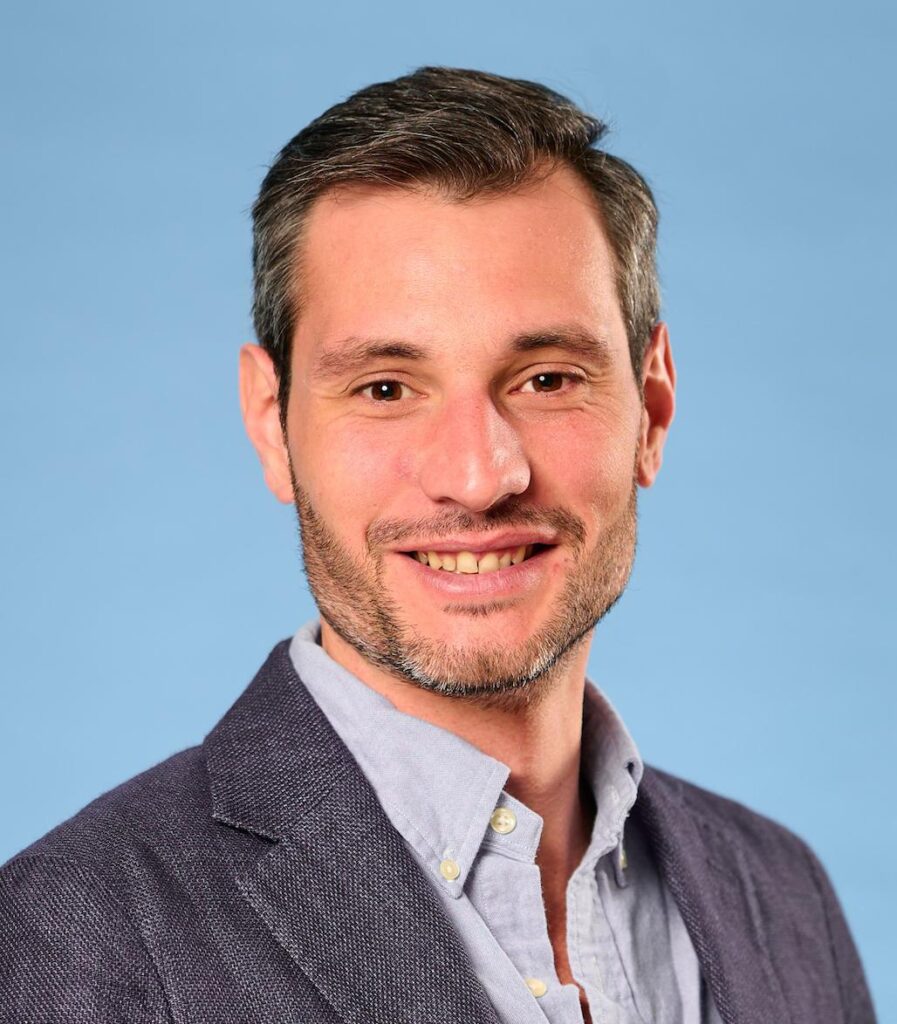
Photo report of the Workshop
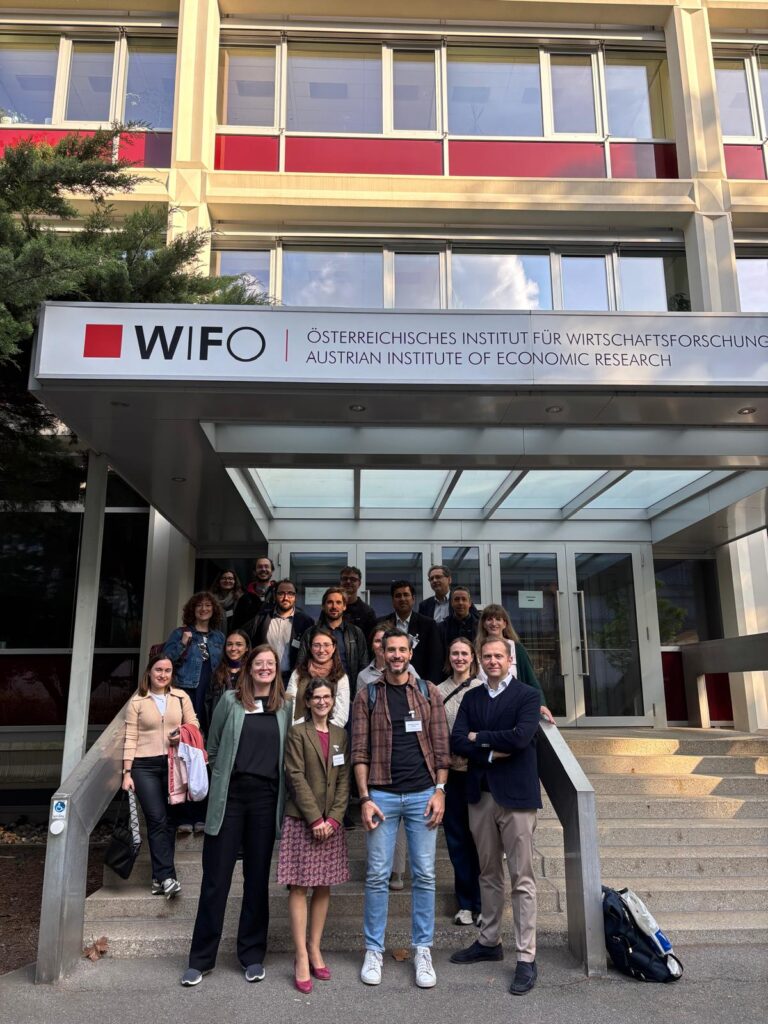
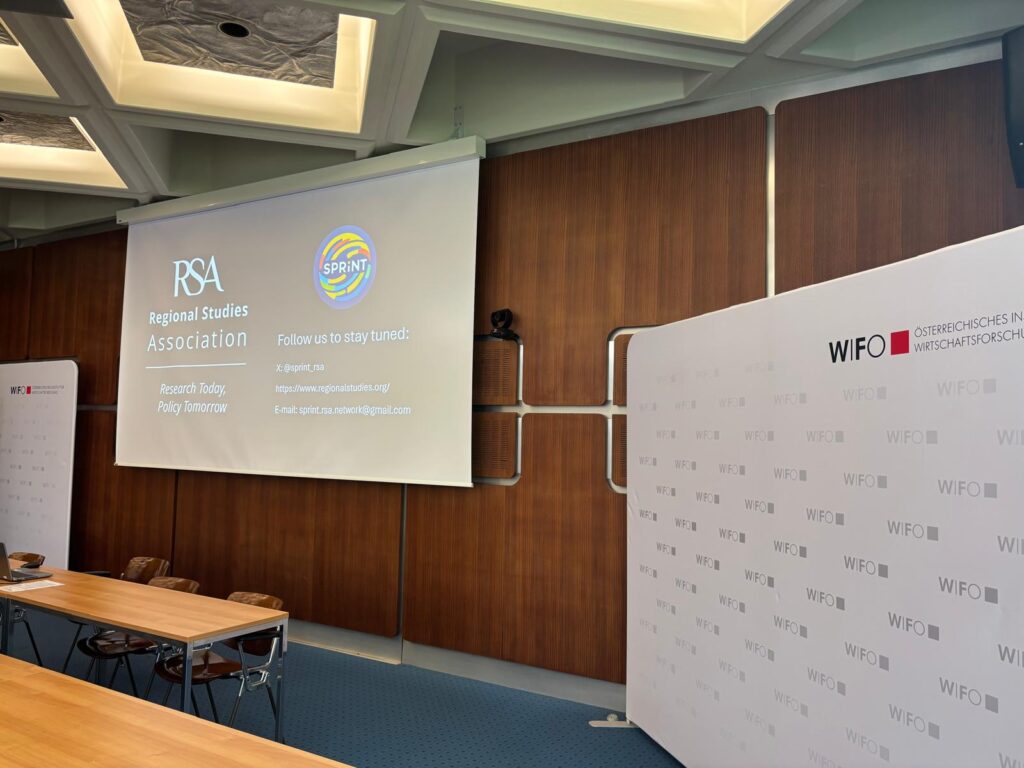
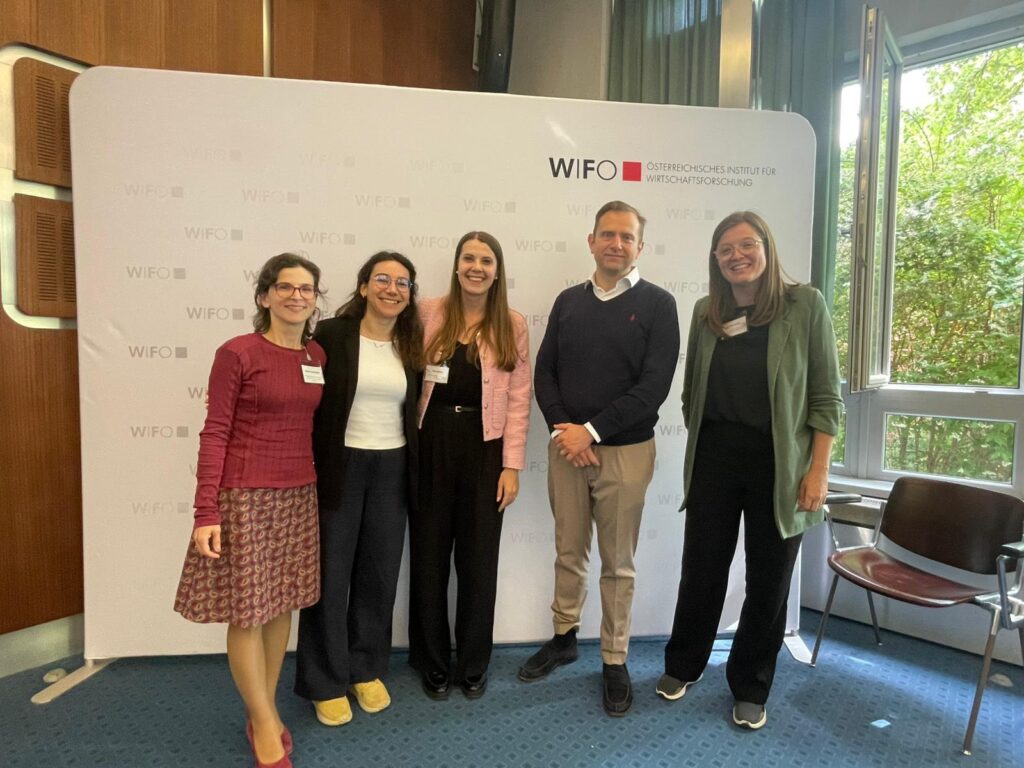

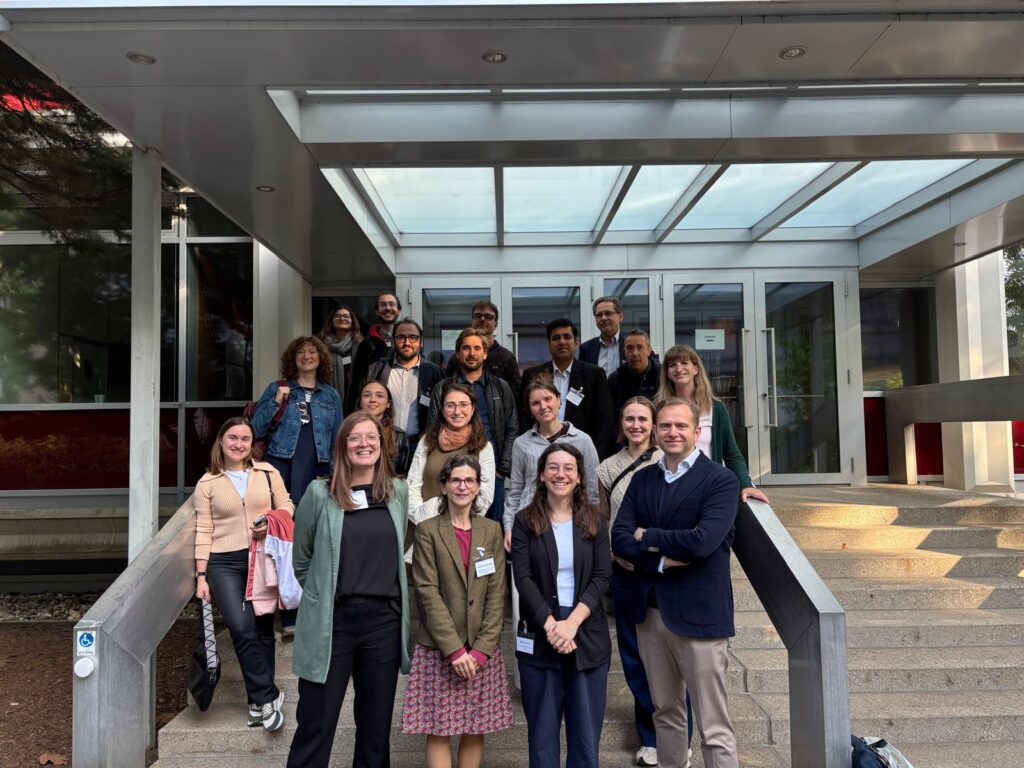
About the RSA Research Network on Smart Policies for Regional Innovation, Sustainability and Transitions (SPRINT)
This network focuses on the Smart Specialisation Strategy (S3) approach as an evolving method for designing place-based innovation policy. We build on three years of cooperation through the Marie Skłodowska-Curie Policies for Smart Specialisation research network, as early-career scholars with considerable research experience in investigating the implementation of S3 policies. The objective of this RSA network is to build upon and expand our prior work; seeking to reorientate academic interest toward the future of S3, considering recent shifts in European policy towards the New Innovation Agenda, Partnerships for Regional Innovation (PRI), and moves towards Open Discovery Processes. We focus on the transition from S3 to sustainable S3 (‘S4’); considering how the new approach aligns with other territorial policies which aim to:
- Drive sustainable economic development through ‘green’ innovation
- Tackle regional inequality
- Foster regional resilience
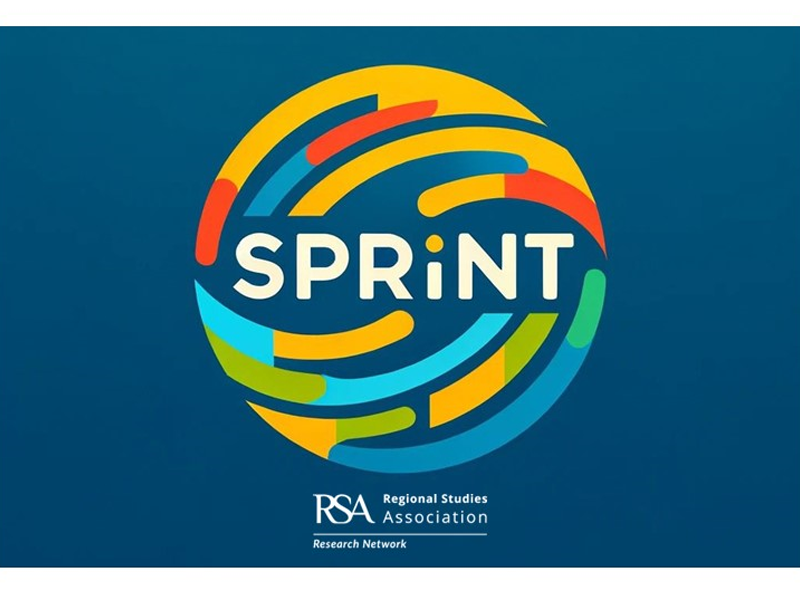
RSA Research Network Organisers
Dima Nedelcheva Yankova, Corvinus University, Budapest, Hungary

Eduardo Hernández Rodríguez, Utrecht University, The Netherlands
Benjamin Cornejo Costas, Utrecht University, The Netherlands

Martina Pardy, LSE, UK




